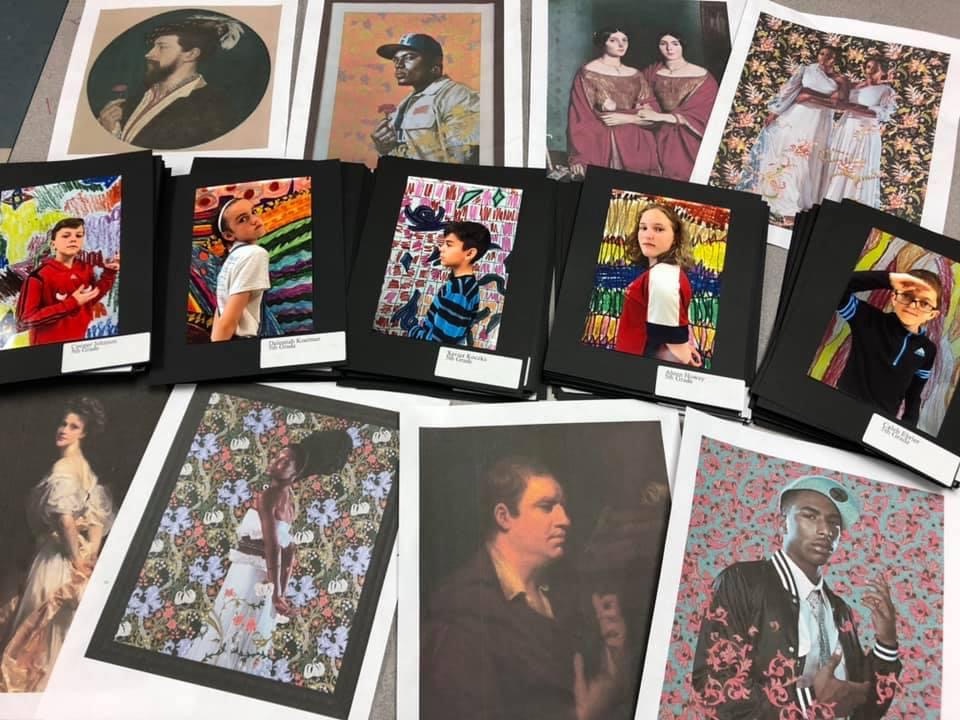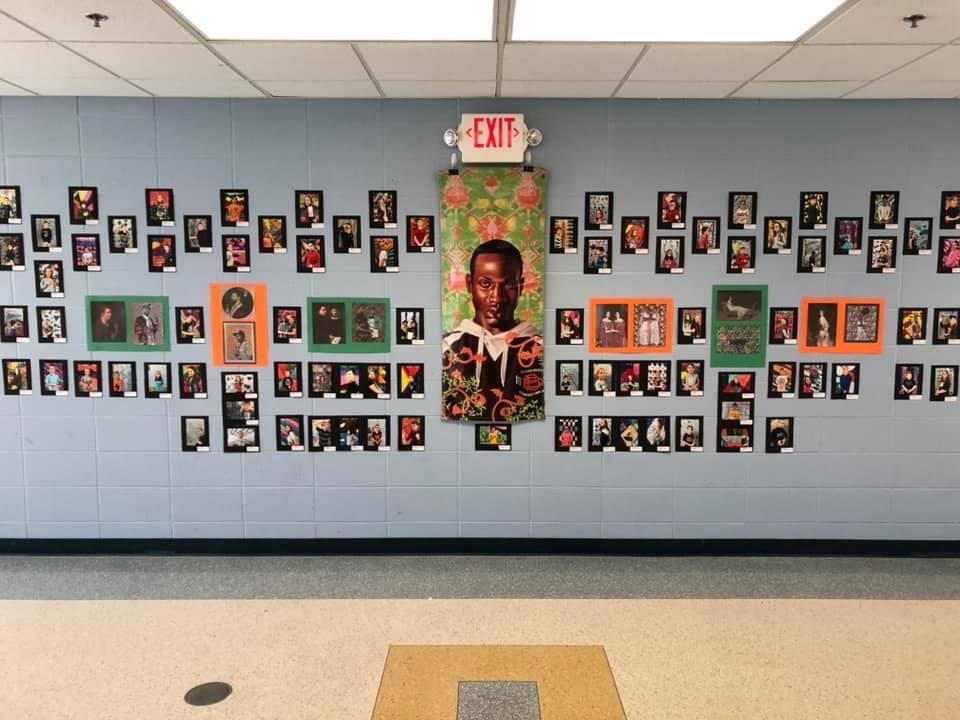The Return to Learn with The Art of Education University
When a student goes above and beyond in your class, it’s important to acknowledge their hard work and celebrate their success. Art teachers are pretty good at showcasing student artwork and providing thoughtful feedback. Regardless of your learning model, we can strive to do more to celebrate our individual students and their unique strengths.
10 Ways to Celebrate Your Unique Students

Remote learning can often feel incredibly impersonal and lack those opportunities to connect with students. We may praise students who actively participate or submit exemplary artwork, but we may be missing a whole group of students. Some of your students may stay on mute and keep their cameras off during class. You may get glimpses of their personality and talent through their assignments, but it’s not the same as if they were in person.
5 Ways to Celebrate Students through Remote Learning
1. Ask questions.
When your students have completed an assignment, instead of simply having them submit a photo of their artwork, create a short questionnaire to submit along with the picture. You can use Google Forms to ask questions like:
- “What was challenging for you about this assignment?”
- “How could you improve your work if you had more time?”
- “What are you most proud of in your assignment?”
These questions relate specifically to their art assignment. However, don’t forget to throw in a question or two each week that helps you get to know your students. For example,
- “What’s your favorite cartoon?”
- “Who are you rooting for in the Superbowl?”
- “Describe your favorite pair of shoes.”
This will give you great insight and provide you with information to celebrate each of your students.
2. Add interesting facts to your rosters.
You may have printed rosters for taking attendance, marking participation points, or checking for missing assignments. Add a column on your roster to include student interests. This comes in handy when you are sitting on Zoom or Google Meets with your students, and you have a moment to chat with them or send a few messages in the chat. You might say something like:
“Hey Cruz, I saw that you listed soccer as your favorite sport. That’s awesome! Do you play on a team or like to watch games on TV?”
You can start a conversation with your student facts cheat sheet. Students will know you care about them and are making an effort to connect with them. For example, your student roster could include student name, ID number, class period, and interests. You can use this same roster for routine purposes but have a bit more unique information at your fingertips.
3. Ask for permission to feature their artwork.
As you’re grading assignments students have submitted online, you will come across a few well-done examples. The student may have worked hard on their techniques, have a really creative concept, or demonstrated thinking outside of the box. You will absolutely want to praise this student, at least privately. Tell them how proud you are of their work and that you would like to share it with their classmates, other classes, the whole school, etc. as a great example. You may have students who decline your request, but you will have others who will be excited about the special attention. Even if your student declines, they will appreciate that you thought their work was worthy of a special feature.

4. Communicate with families.
When you have a student succeeding in-class participation, skills, techniques, or creative ideas, you should acknowledge and praise them privately or with their classmates. You can take this celebration one step further and send a message or a phone call home to explain to the student’s family how proud you are of them. Family members will be thrilled to receive good news from their child’s teacher. Many families only hear from the school when there is a behavior issue. Make a goal to reach out to a few families each week or with each project. Hold yourself accountable for communicating good news with families throughout the school year.
5. Praise active participants.
Depending on the grade level you teach, you may have hyperactive groups or eerily silent students in your meetings. Whichever the case, you can motivate your students by praising those who do participate in class discussions, critiques, and activities. You might say something like:
“Thanks, Lilly! I appreciate you sharing your drawing with the class. I love seeing my students work!”
“Thank you to those of you who have your cameras on. It’s nice to be able to see you hard at work on your watercolor paintings!”
Drawing attention to the positive choices your online learners are making might make an even bigger impression than chastising others.
5 Ways to Celebrate Students through In-Person Learning
1. Award exemplary students each term.
Take a look at the projects students have completed during the first term. Choose a couple of student works that really stood out to you as embodying the learning objectives and exceeding your expectations. Create an award to present these students, either in the classroom or at your school’s existing awards program. Continue this with each term, so your students can look forward to and work toward.

2. Add a social media feature.
If your school or district has a social media account, send a picture of a star student’s artwork to be featured online. Include a caption that explains why it is worthy of such an honor and how proud you are of that student. Again, you will probably want to ask the student for permission first. This can be a great way to celebrate your students in the larger community and allow the student’s family to share the post with family and friends.
3. Create a gallery wall.
Create a space in your classroom or school to showcase the best artwork from your classroom. This may be changed throughout the school year or be a more permanent display for really impressive works. Students will be excited to have their work on display, especially if you make a big deal out of it. This can be an exclusive gallery wall where only the finest of student work is presented. Students who work hard should be rewarded with special recognition in your gallery.

4. Add a community display.
Likewise, you can present student artwork out in the community. Local businesses and civic buildings like libraries, clinics, or the post office, could be great venues to display student art. Your students will get a kick out of being a professional artist with work on display in a public place! This is also a great way to advocate for your art program in the community. The general public will have an opportunity to see all of the great work your students are creating. More importantly, you have the opportunity to really motivate and encourage the students you are celebrating.
5. Develop a personalized lesson.
Every once in awhile, you have a student who is very vocal about their interests in and/or outside of the art room. They work hard and always impress you with their creative ideas for projects. Reward those students who truly go above and beyond with their own personal lesson. You can even name the lesson after them! “The Marcus Design Challenge” could be a drawing project where everyone creates their own shoe design, soda label, video game character, etc. The project can have a broad theme but be inspired by a particular student’s interests.
The Return to Learn with The Art of Education University
Final Thoughts
There are always a handful of students who excel at academics, sports, or the arts and are continually celebrated. We know these students in our own schools and communities. We also know many other students who are often overlooked and never receive any special recognition. We can find ways, both big and small, to celebrate these students. Remote learning and socially-distanced in-person learning may limit the kinds of celebrations we can share. Still, no matter our circumstances, we can find ways to motivate, encourage, and make our students feel appreciated.
How are you celebrating students this school year?
What do you do to make art awards special?
What community spaces have you used to display student art?
Magazine articles and podcasts are opinions of professional education contributors and do not necessarily represent the position of the Art of Education University (AOEU) or its academic offerings. Contributors use terms in the way they are most often talked about in the scope of their educational experiences.





